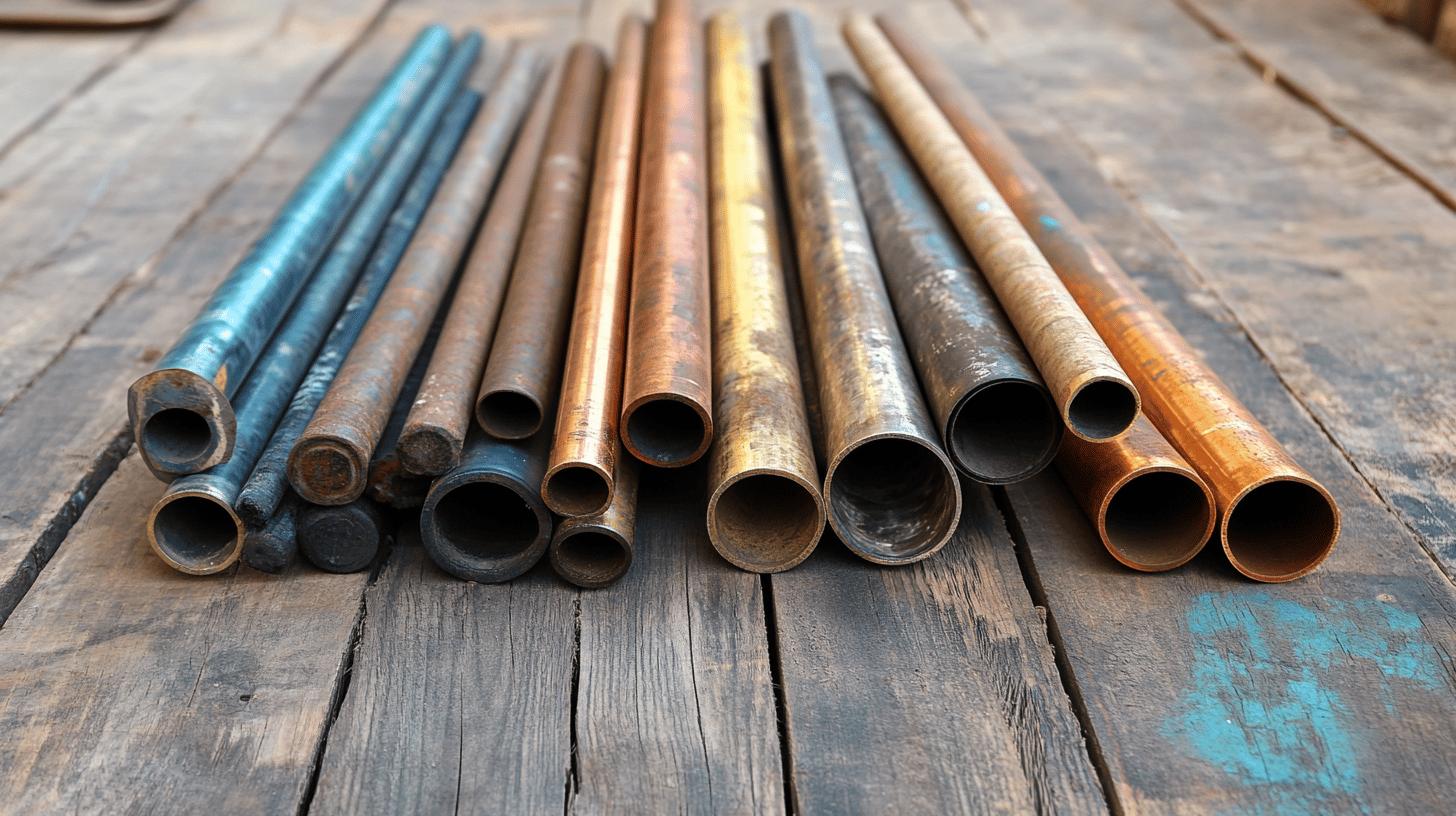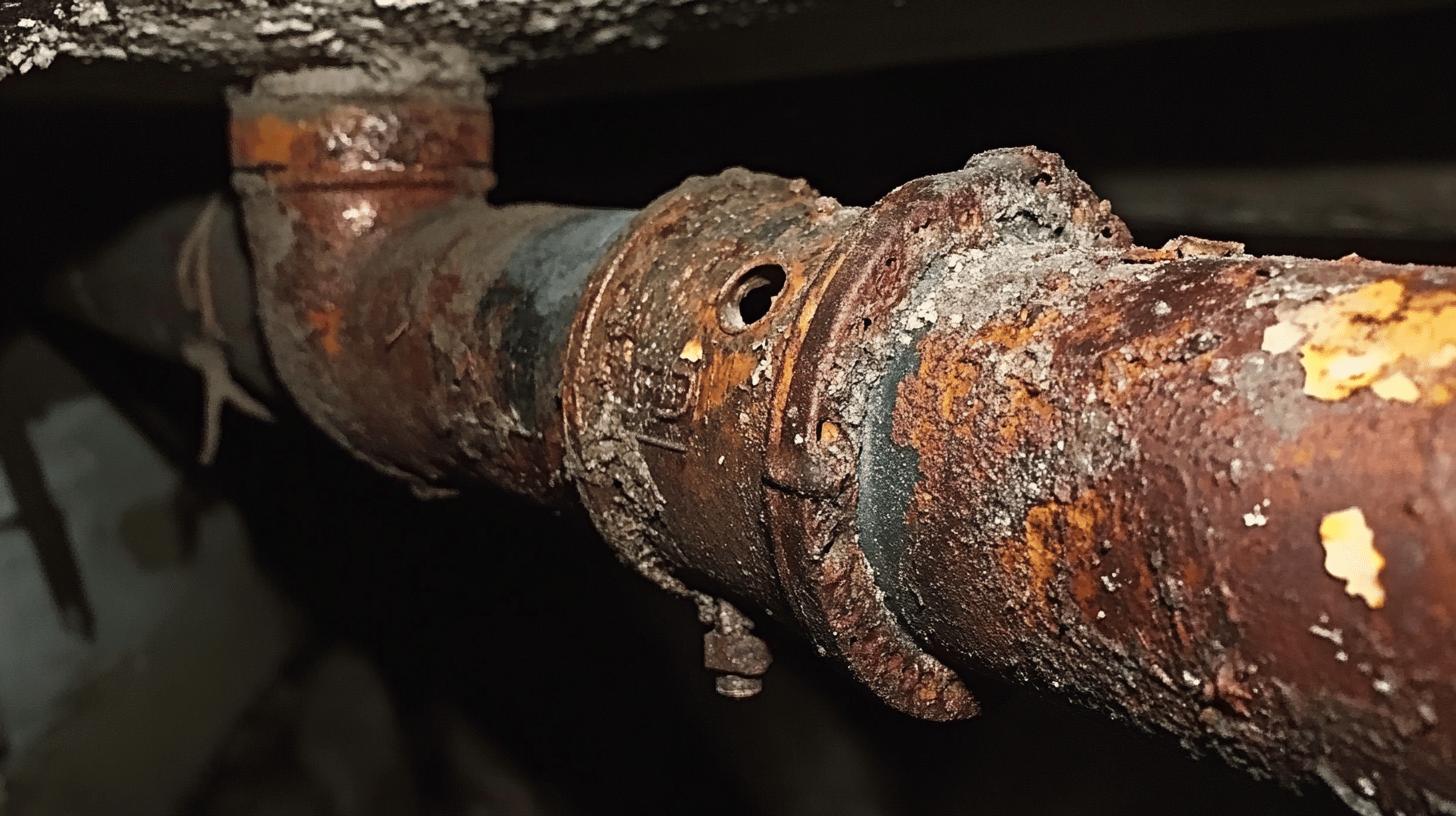TL;DR:
- Water Issues: Key plumbing problems in old homes include pipe corrosion (cast iron/galvanized steel), clogs, and low water pressure.
- Outdated Materials: Common materials are copper with lead solder, galvanized steel, polybutylene, and cast iron.
- Health Risks: Lead exposure can cause neurological damage; asbestos poses cancer risks.
- Historical Context: Cast iron rusts, clay pipes crack, galvanized steel rusts internally, and polybutylene degrades.
- Benefits of Updates: Upgrading improves water quality, property value, and reduces leakage risks.
- Modern Solutions: Options include PEX, copper, trenchless technology, and SharkBite fittings.
- Professional Help: Hiring skilled plumbers ensures safety, code-compliance, and effective problem resolution.
Is your old home hiding plumbing problems? Many older homes have plumbing issues because their systems and pipes are outdated. From rusty pipes to low water pressure, these problems can cause serious damage if not fixed. Knowing what to look for and how to solve these issues can help keep your home safe and comfortable. In this post, we’ll break down simple plumbing solutions for old homes so you can keep your house in top shape. Keep reading to find out what you need to do.
Common Plumbing Problems in Old Homes
Old homes may look charming, but their plumbing systems are often outdated. These old systems can cause a lot of problems that don’t meet today’s standards. One big issue is pipe corrosion—materials like cast iron and galvanized steel rust over time, leading to leaks and water damage. Low water pressure is another common problem, usually from narrow or clogged pipes. Plus, these systems might not follow current building codes, which can create safety concerns. Bad installation in the past can also lead to ongoing issues, making repairs trickier.
- Pipe Corrosion: Rust and deterioration in materials such as cast iron and galvanized steel.
- Clogs: Blocked narrow pipes restrict water flow.
- Low Water Pressure: Related to blocked or narrow pipes.
- Outdated Materials: Often non-compliant with modern codes.
- Improper Installation: Leads to ongoing issues.
It’s important to fix these plumbing issues right away to avoid more damage. Professional plumbers have the skills to tackle these problems the right way, making sure repairs are done properly and meet current codes. Waiting too long can make things worse, leading to higher repair costs and safety risks. That’s why hiring experts is key to keeping your home’s plumbing safe and working well.
Identifying Old Plumbing Systems and Materials

Identifying old plumbing materials is crucial for figuring out their condition and planning upgrades. Homes built before modern codes often have materials that are now considered outdated or risky. Common examples include copper pipes with lead solder, galvanized steel, and polybutylene pipes.
Copper pipes joined with lead solder can pose health risks because of lead exposure. Galvanized steel pipes, while strong, rust and corrode over time, which can affect your water quality. Polybutylene pipes, once widely used, are known to fail under pressure, leading to leaks.
- Copper with Lead Solder: Metallic sheen and joints; health risks from lead.
- Galvanized Steel: Grayish with zinc coating; rust-prone.
- Polybutylene: Gray or blue, flexible; prone to leaks.
- Cast Iron: Heavy and dark; long-lasting but can corrode internally.
Recognizing these old materials helps you prioritize upgrades. A professional assessment can determine if repairs or replacements are necessary, making sure your plumbing is safe and runs efficiently. Upgrading to modern materials like PEX or lead-free copper can improve water quality and make your system more reliable.
Historical Context of Plumbing Materials
Plumbing materials have changed over time, with each era adopting new options based on technology and needs. Early 20th-century homes used cast iron for drainage because it was strong, but it rusted over time. Clay pipes were used for sewer lines; they resisted chemicals but cracked easily under pressure. In the mid-20th century, galvanized steel became popular for water resistance but eventually rusted from the inside. Polybutylene, a plastic resin used from the 1970s to the 1990s, was cheap but later found to degrade and cause leaks.
| Material | Time Period | Common Issues |
|——————|——————-|———————————|
| Cast Iron | Early 20th Century| Rust and internal corrosion |
| Clay | Early 20th Century| Brittle and prone to cracking |
| Galvanized Steel | Mid 20th Century | Internal rust and corrosion |
| Polybutylene | 1970s-1990s | Degradation and leaks |
Knowing the history of plumbing materials helps when renovating. Recognizing the original materials in your home helps you decide whether to repair or replace them, avoiding issues like rust or leaks. This knowledge also helps you choose modern, durable materials that improve efficiency and keep your home in good shape.
Risks and Health Hazards of Old Plumbing

Old plumbing systems can have lead and asbestos, which are serious health risks. Lead solder, once used in copper pipes, can be harmful, especially to children, causing developmental and neurological issues. Asbestos, used for insulation, is a carcinogen that can lead to cancer if its fibers are inhaled.
- Neurological Damage: Lead exposure can cause brain damage and developmental delays.
- Respiratory Problems: Asbestos inhalation risks lung issues.
- Cancer Risk: Prolonged asbestos exposure is linked to cancers like mesothelioma.
Professional inspections are crucial for spotting lead and asbestos hazards. Experienced plumbers can detect and handle these risks quickly. Regular inspections help prevent problems, ensuring a safer, healthier home.
Updating Plumbing Systems in Older Homes
Updating plumbing in older homes improves efficiency and safety. The main benefits include better water quality, increased property value, and a lower risk of leaks and damage. Replacing outdated materials ensures a more reliable system. Modern plumbing can handle higher pressures and resist corrosion, reducing future issues. Plus, updated plumbing can boost your home’s value, making it a smart investment for both sellers and homeowners upgrading their space.
- PEX (Cross-linked Polyethylene): Flexible, resists scale and chlorine, suited for hot/cold water.
- Copper: Durable, reliable, with a long life and bacterial resistance.
- Trenchless Technology: Minimizes landscape disruption when replacing pipes.
- SharkBite Fittings: Quick-connect, solder-free pipe installation.
Why hire professionals? Skilled plumbers make sure your updates meet codes and standards, avoiding mistakes and legal problems. They can spot issues that might not be obvious to the untrained eye and handle tricky retrofits safely. Hiring experts helps protect your system and gives you peace of mind.
Final Words
Dealing with plumbing issues in older homes can feel overwhelming due to outdated systems and materials. But by knowing common problems like corroded pipes, low water pressure, and risks with old materials, you’re in a better position to handle them. Replacing old plumbing with modern options boosts safety, efficiency, and property value. Hiring professional plumbers ensures everything meets current standards and gives you confidence in your home’s plumbing. Embracing these solutions is a great way to preserve and improve your living space.
FAQ
Do old houses have bad pipes?
Old houses often have plumbing made of outdated materials like galvanized steel or lead, which can corrode and lead to leaks or health risks. Prompt inspection can identify issues before they worsen.
What is the most common household plumbing problem?
The most common issue is pipe corrosion, leading to leaks and water damage. Other frequent problems include low water pressure, clogs, and outdated plumbing systems that may not meet current codes.
What is the lifespan of home plumbing?
Plumbing systems typically last 20 to 100 years, depending on materials like galvanized steel or copper. Regular maintenance can help maximize the lifespan of your plumbing system.
When should house plumbing be replaced?
Replace plumbing when frequent leaks occur, water quality deteriorates, or pipes are 50 years or older. Professional assessment can determine if replacement or repair is needed.
How to check plumbing in an old house?
To check old plumbing, inspect visible pipes for rust or leaks, listen for unusual noises, and test water pressure. Professional inspections are recommended for a thorough evaluation.
What are old house plumbing pipes usually made of?
Old house plumbing typically includes materials like galvanized steel, lead, or clay, which are prone to corrosion, leaks, and health hazards due to lead content. Identifying these is crucial for safety and repairs.
What is galvanized plumbing?
Galvanized plumbing involves steel pipes coated with zinc to prevent rust. Over time, the coating wears off, leading to rust, water discoloration, and reduced water pressure. Replacing them improves safety and efficiency.

